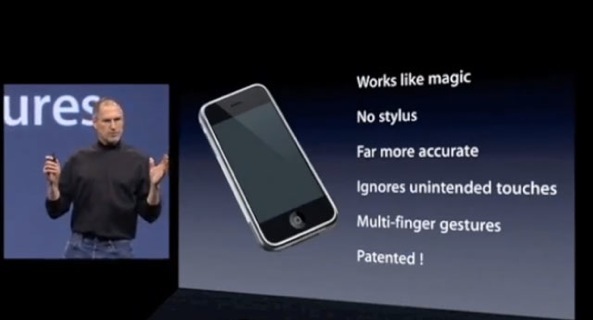We’ve seen the United States Patent and Trademark Office reject or invalidate a few important Apple patents in the last few months, including one covering the infamous ‘rubber banding‘ UI feature, and one covering the iPhone.
Today, the USPTO added another key patent to the list, tentatively declaring Apple’s US 7,844,915 invention — widely referred to as the pinch-to-zoom patent — invalid. It’s just a preliminary decision, but it’s still a fairly big deal…
The USPTO’s decision popped up in an Apple v. Samsung court filing earlier today. The ‘915 patent played a big role in Samsung’s recent $1 billion loss to Apple — all but 2 devices were found to infringe it — and it’s obviously hoping that bringing this to light will improve its chances for a re-trial.
Here’s an excerpt from the ‘915 patent (via AppleInsider):
“8. A machine readable storage medium storing executable program instructions which when executed cause a data processing system to perform a method comprising: receiving a user input, the user input is one or more input points applied to a touch-sensitive display that is integrated with the data processing system; creating an event object in response to the user input; determining whether the event object invokes a scroll or gesture operation by distinguishing between a single input point applied to the touch-sensitive display that is interpreted as the scroll operation and two or more input points applied to the touch-sensitive display that are interpreted as the gesture operation; issuing at least one scroll or gesture call based on invoking the scroll or gesture operation; responding to at least one scroll call, if issued, by scrolling a window having a view associated with the event object; and responding to at least one gesture call, if issued, by scaling the view associated with the event object based on receiving the two or more input points in the form of the user input.”
Essentially, the patent covers the ability of a programming interface to determine whether one finger initiates scrolling, or a different number of fingers perform a different action. The USPTO’s decision cites multiple cases of prior art for this function, including two U.S. patents, one international property and two Japanese filings.
Again, it’s important to note that nothing is final here. Apple is talking to the US Patent Office about the patent, and it still has plenty of time to either prove it to be valid, or to amend its language so that it will at least stay effective in the Samsung case.
That being said, Samsung obviously believes the USPTO’s decision could work in its favor, and it’ll be interesting to see how this all plays out. Post trial hearings continue this week, with Judge Koh expected to rule on trial damages and other motions.
